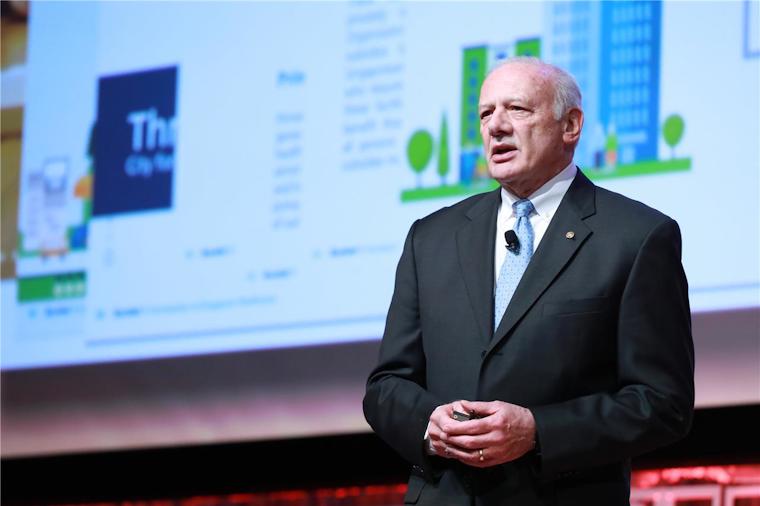The Medical Workforce of the Future: An Address by ACGME President and CEO Dr. Thomas J. Nasca
In his President’s Plenary, ACGME President and CEO Thomas J. Nasca, MD, MACP addressed a crowd of approximately 3,700 people with a fundamental question – “what will the medical workforce of the future look like?” The short answer is no one knows.
For example, five years ago, the US was moving toward a health care system with universal coverage and Medicaid expansion. Today, that vision is not shared. What do these complexities mean for the graduate medical education (GME) community that needs to train the physicians of the future? Residents and fellows in training today will be practicing in 2050 and beyond.
According to Dr. Nasca, “the GME community must be successful in equipping them as best as possible now.”
He spoke of an aging population and the potential impact of social determinants of health on how clinical care is delivered. He stated that artificial intelligence (AI) will be a factor in the future of health care. “AI holds the potential of taking us back to the bedside, relieving tasks, and making us more humane,” he said.
Flexibility for an uncertain future
Dr. Nasca underscored the need to harness the ambiguity and prepare for the future in a flexible manner. One way the ACGME has begun to do that is through scenario planning–identifying alternative futures, with core strategies and actions to address each one. “The mission of the ACGME is to serve the public by meeting their needs, and in order to understand their needs, we need to understand society in general,” he said.
Over several months, the ACGME interviewed people inside and outside of health care to understand projections and drivers of the future, and prioritized different strategies for delivering medical education.
Dr. Nasca related eight key insights from this work.
- there will be increased complexity in society generally and within patient care
- there will be increased information transparency
- there will be little tolerance for approaches to accreditation, credentialing, and licensing with burdensome process inefficiencies and multiple factors with conflicting standards
- commoditization of health care services is accelerating across all scenarios
- since there is no consensus on the future shape and stability of health care delivery, flexibility will be crucial
- no single “specialist mix” distribution analysis will be possible
- there will be a high demand for a medical education system capable of supplying a wide variety of distributions of physicians by specialty
- there will be such diversity in medical delivery approaches that the conceptualization of the physician workforce (primary care vs. subspecialist) is not a useful approach for planning the future of the medical profession
While the future is complex, there are certain responsibilities that will not change; the ACGME identified that GME must continue to:
- be responsive to societal needs
- be forward-facing and anticipatory of the needs of those we serve
- be outcomes-oriented and evidence-based, whenever possible
- promote effective interprofessional team-based care
- produce graduates who provide for and promote the safety and quality of patient care throughout their careers
- produce graduates who manifest professionalism and effacement of self-interest to meet the needs of their patients
Dr. Nasca stressed that these responsibilities must be accomplished under the auspices of an ACGME that manifests the values it currently espouses. “Pivotal in approaching the uncertainty of the future is a firm understanding of and commitment to our values,” said Dr. Nasca. “We need an education system that can give people what it needs when it needs it.”
He spoke of common threads throughout these findings, including the importance of making sure physicians are well–for themselves and for the benefit of patients. He addressed the need to train physicians in a way that they behave professionally and can thrive.
Dr. Nasca summarized his talk by acknowledging that the clinical practice of medicine most certainly will change, but what will remain durable is the personal care of patients. He passionately called for the community to take action. “Our job is to seek the horizon,” he said. “Our job is to prepare physicians to seek the horizon. What is next?”
“We have to roll up our sleeves and help. We have to diversify our educational environments. We have to create a more harmonized approach to education, and we have to be better at nurturing the professional identity formation of our physicians,” he said. “We can do it together.”

